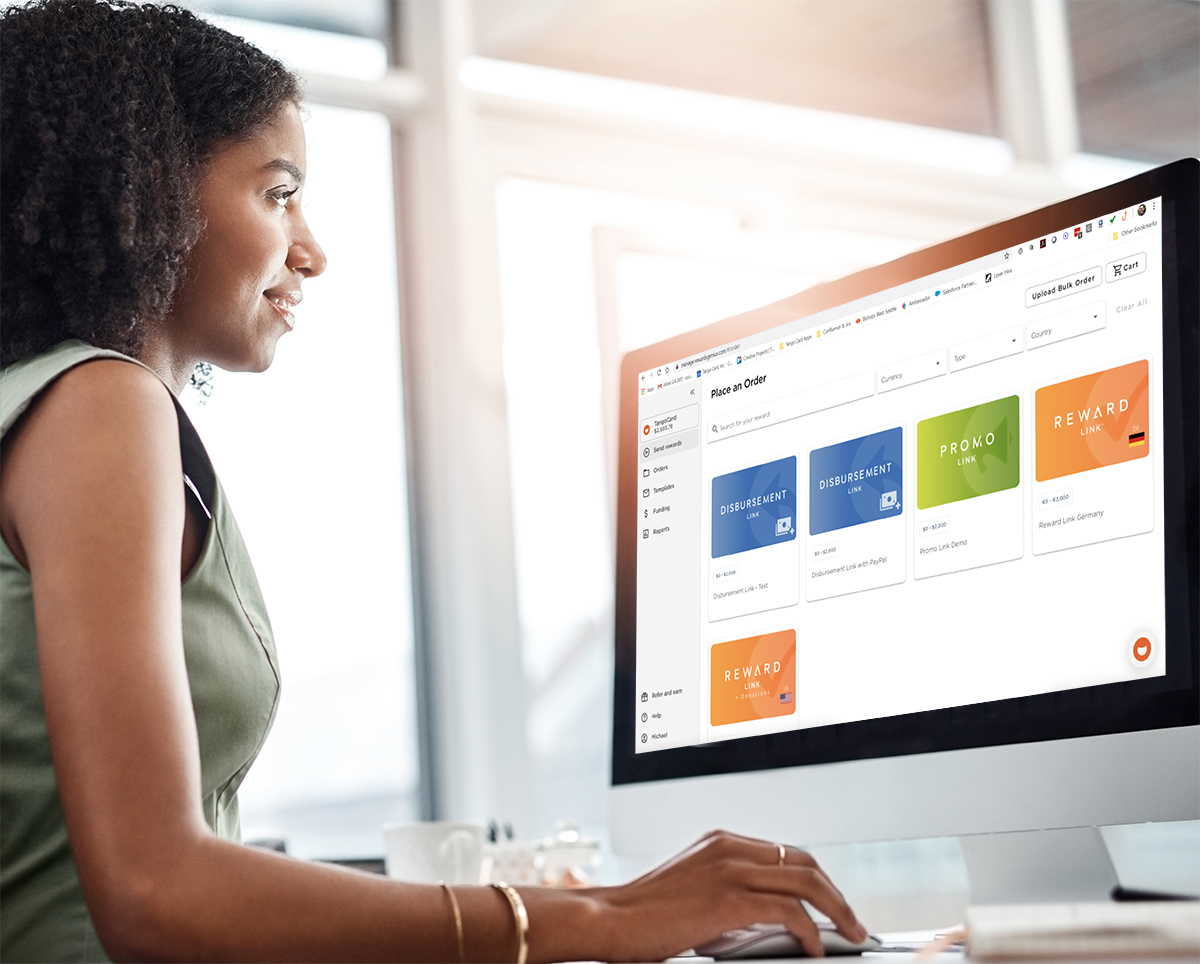

Whether you’re distributing a survey, running a focus group, organizing a community, or managing a panel, it’s essential to provide an incentive that’s easy to administer and track—and that gives your recipients immediate and flexible reward choices.
Table of contents
How Tango modernizes the incentive experience for respondents
How researchers use Tango's reward solutions
Solutions that meet every research need
What other research professionals are saying
Respondents receive their e-gift cards instantly via email, creating immediate satisfaction.
With a reward catalog of 1000+ of the most popular e-gift cards, there’s something for everyone.
Respondents with redemption questions or technical issues can contact our support team for assistance.
Our gift card redemption process is easy. Respondents simply visit the website provided in their reward email and select the gift cards of their choice.
Easily order market research and focus group incentives one at a time or in batches. You can also automate reward delivery with our integrations, including SurveyMonkey and Qualtrics.
Reward Link®—our most popular incentive solution—makes it easy to send your respondents a choice of gift cards instantly through email. Researchers prefer this solution because it takes out the guess work and lets respondents choose how they spend their hard-earned incentive.
The majority of our reward solutions are completely free, which means 100% of your budget goes to the incentive in most cases.
With gift cards, the constant need to research and select new incentives for research participants is eliminated, which saves you—and your company—valuable time.
When you work with us, the need to manually track and log the research and online survey incentives you send is eliminated. Our built-in reports can be quickly downloaded and organized at an organization, department, or respondent level. Plus, digital gift cards arrive instantly, making respondent satisfaction immediate.
Professors, students, and marketing professionals who’ve secured grants at their universities use our solutions to conduct focus groups and surveys.
Our free, self-serve web portal makes it easy to order and send incentives on demand, which is ideal for projects that require daily or weekly sends.
With the Tango portal, you can also create customized email templates with your university’s branding and a personal message, add funds to your account, and send out incentives—all in one place.
University researchers and professionals also benefit from our integrations, including Qualtrics and SurveyMonkey. Our out-of-the-box integrations make it easy for you to send and automate rewards in the systems you already use, but we can also create integrations to fit your specific needs.
Along with our incentive solutions, we offer industry knowledge and detailed reporting to help you secure IRB approval.


Researchers use our solutions to successfully conduct quantitative and qualitative research.
Our free, self-serve web portal makes it easy to order and send incentives on demand, which is ideal for projects that require daily or weekly sends.
With Tango, you can create customized email templates with your company’s branding and include a personal message, add funds to your account, and send out incentives—all in one place.
Market researchers also benefit from our integrations, which help automate rewards. These integrations make your workflow easier by connecting the systems you already use—like Qualtrics, QuestionPro, and Zapier—to our digital gift card delivery platform. We can also create integrations to fit your specific needs.
If you’re looking for an integration to your HCM, MAS, ERP, or CRM, learn how we can help create a connection that adds convenience.
For special services where payments aren’t required, researchers use Reward Link—our most popular reward solution. With Reward Link, you’re able to instantly send gift card incentives via email. When your recipient opens the email, they click the Reward Link URL and are directed to a gift-card catalog, which provides 100+ global brands to choose from.
Plus, you can easily customize the email templates with your logo and branding as well as add a personalized message.


No matter how you’re engaging your panel or community members, gift cards are a simple and universal choice. They’re simple to deliver at the end of a survey, a project, or even integrated into a points-based engagement model.
Panel researchers can also benefit from our integrations, which help automate rewards. These integrations make your workflow easier by connecting the systems you already use—like Qualtrics, QuestionPro, and Zapier—to our e-gift card delivery platform.
If you’re a researcher who’s struggling to find an incentive product that’s supported by your company’s proprietary platform and technology, our Rewards as a Service (RaaS) API provides a perfect solution. Our API can help your company leverage automation by powering incentives in your existing apps and platforms.
Use the Tango portal for managing your reward and incentives programs. In this free, self-serve dashboard, you can:


Reward Link is the standard reward offering in Tango, and for good reason. This gift of choice, which is our most popular option, gives your participants a wide selection of desirable gift cards. With Reward Link, you can instantly send rewards to the inboxes of your employees on an email template that’s branded with your logo and messaging.
To directly integrate rewards within your internal systems, your development team may be interested in an API integration. Our API is built to power rewards and incentives in apps and platforms. It contains multiple methods to support simple reward automation or platform-wide implementation. With our API, you can:


Send and automate rewards in the systems you’re already using. We can integrate Tango with your CRM, MAS, and task automator to drive results. We’ve also integrated with Salesforce, Qualtrics, and Zapier.
Tango is a very easy system to use for respondent payments.
I need participants for surveys, focus groups, and interviews. These gift cards work extremely well for recruiting.
We run brand tracking surveys for our clients’ customers. This is an easy way to reward them for participating.
From saving time and money to improving the recipient experience, here’s why our customers work with us.

Of the surveyed professionals that work with us, 88% have saved time and 68% have saved money.

When you work with us, there’s no need to maintain spreadsheets or tracking documents. We offer simplified, easy reporting in one free platform. You can pull data for a single participant or view reports at a company or department level. Our platform was built with you and your workflow in mind to ensure any reports and tracking stay organized with minimal effort.

Our support team isn’t just available to you, it’s available to your respondents too. We’re happy to provide support for all your respondents, so you’re not left fielding redemption questions or troubleshooting technical issues.

